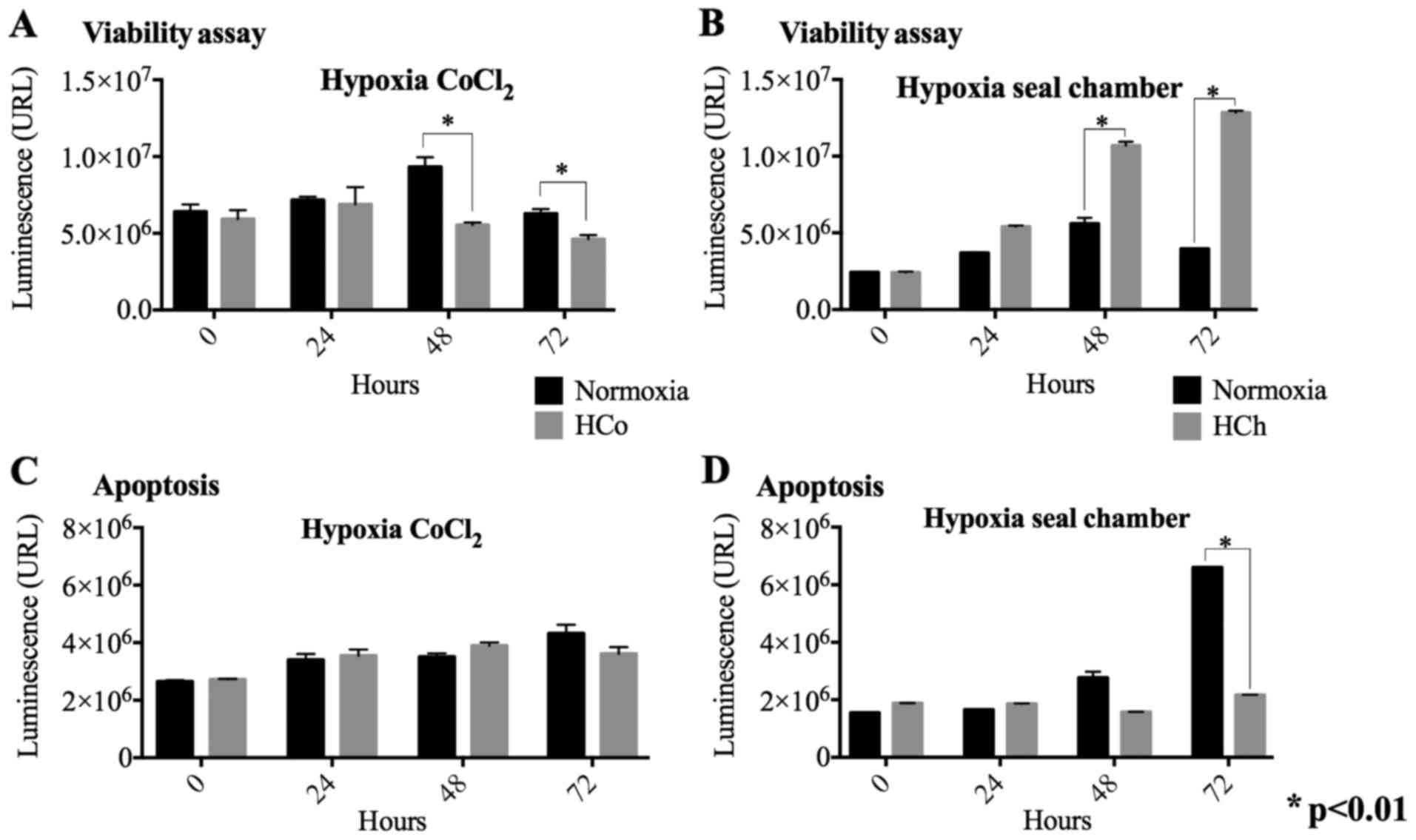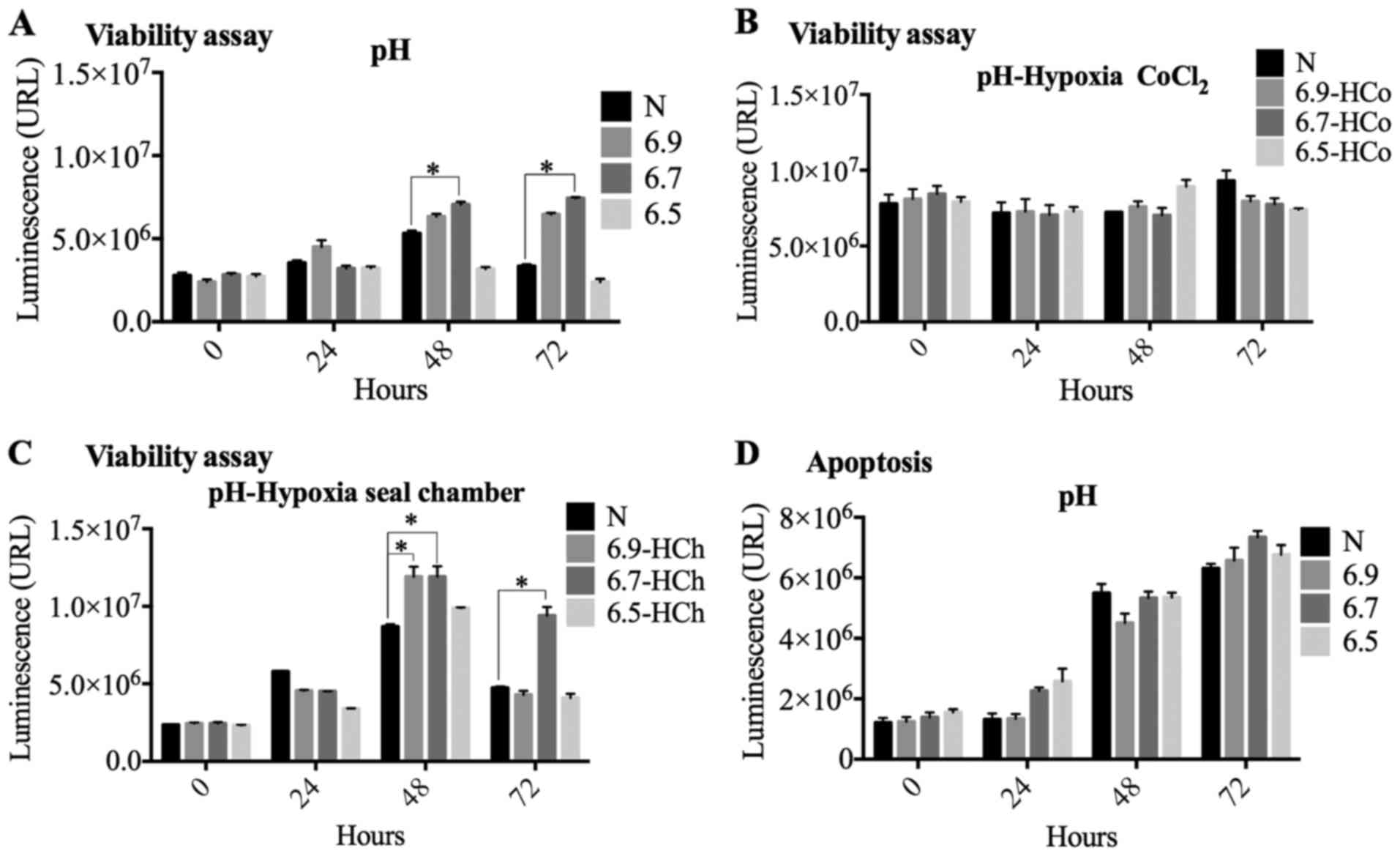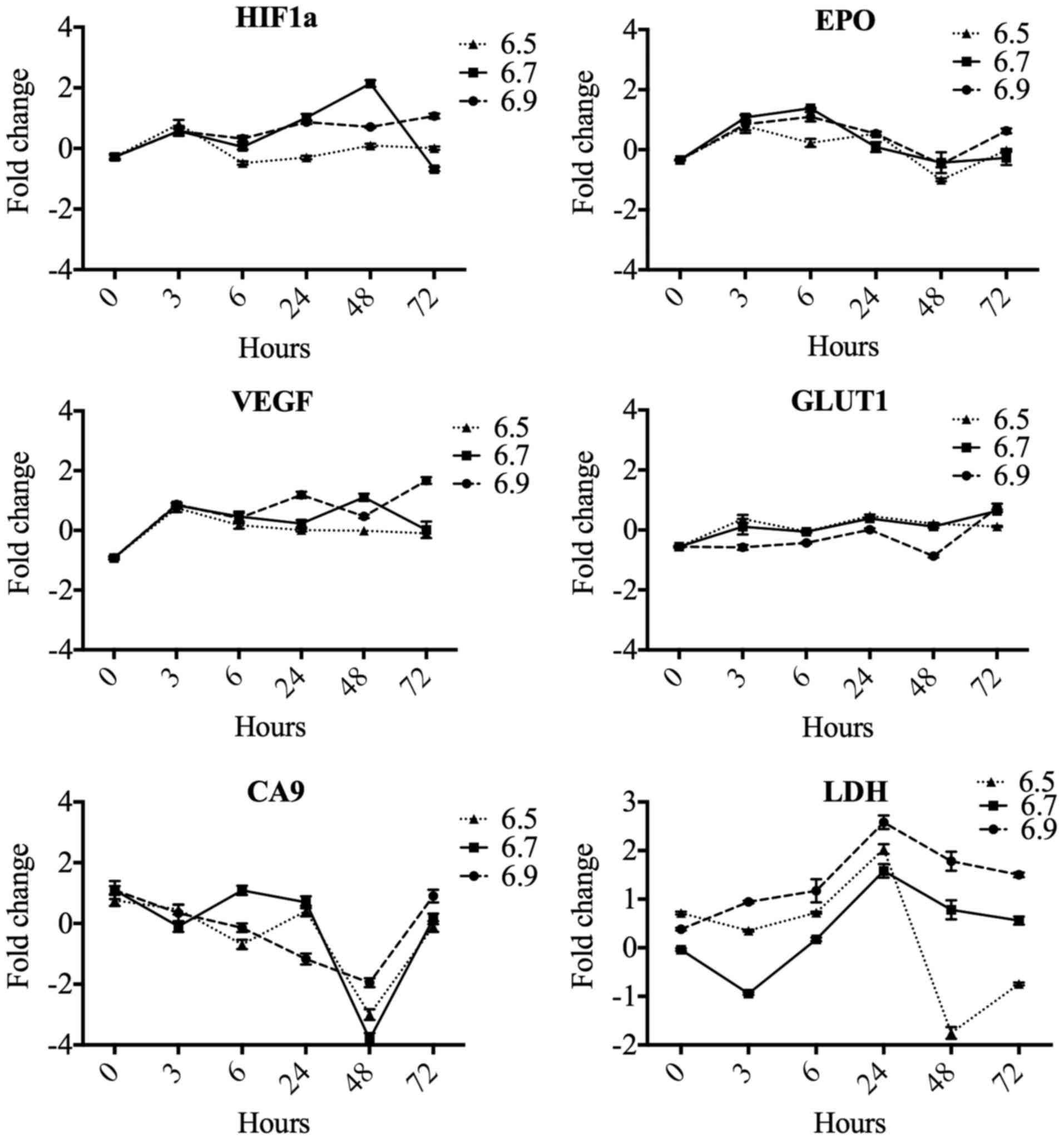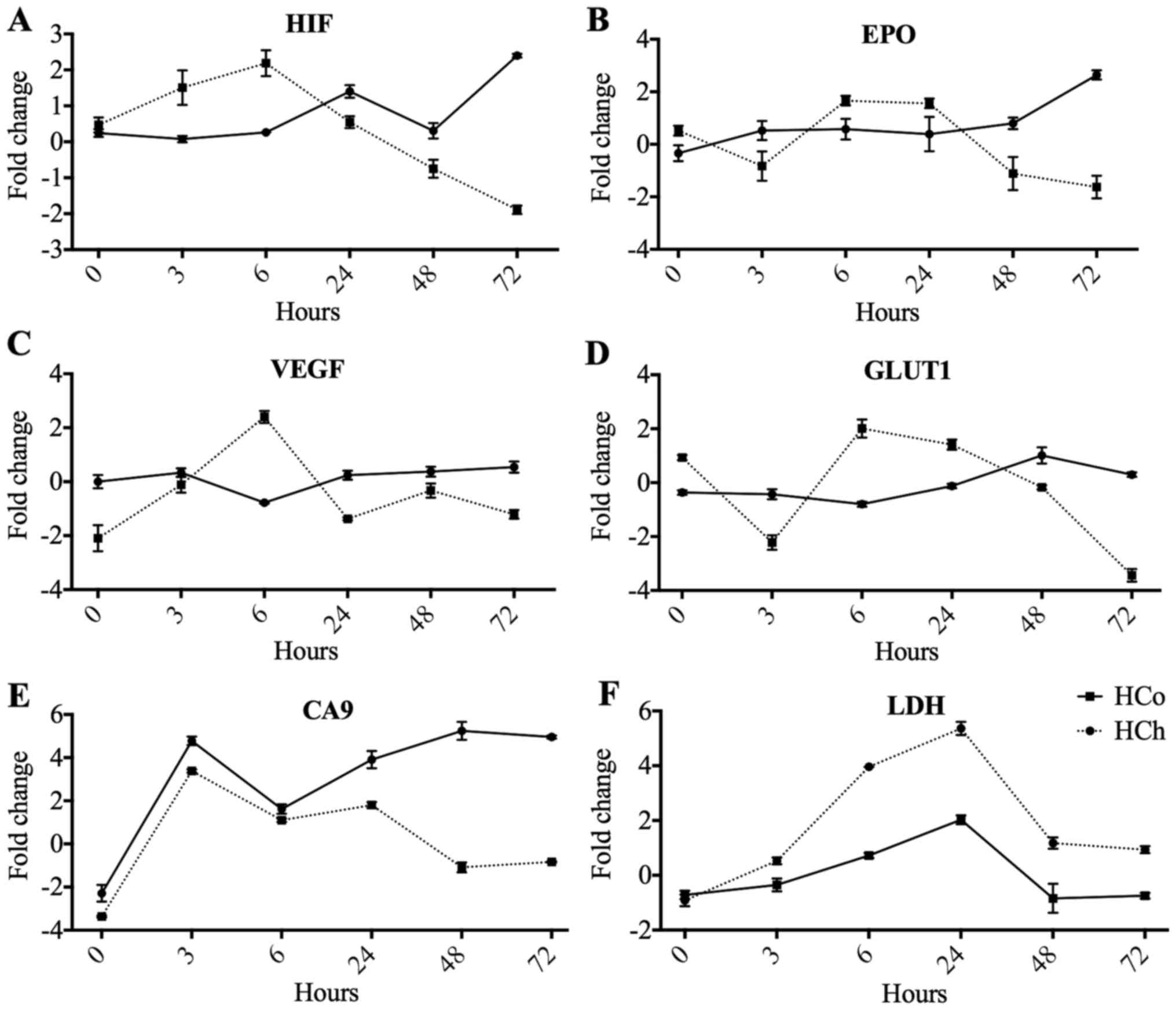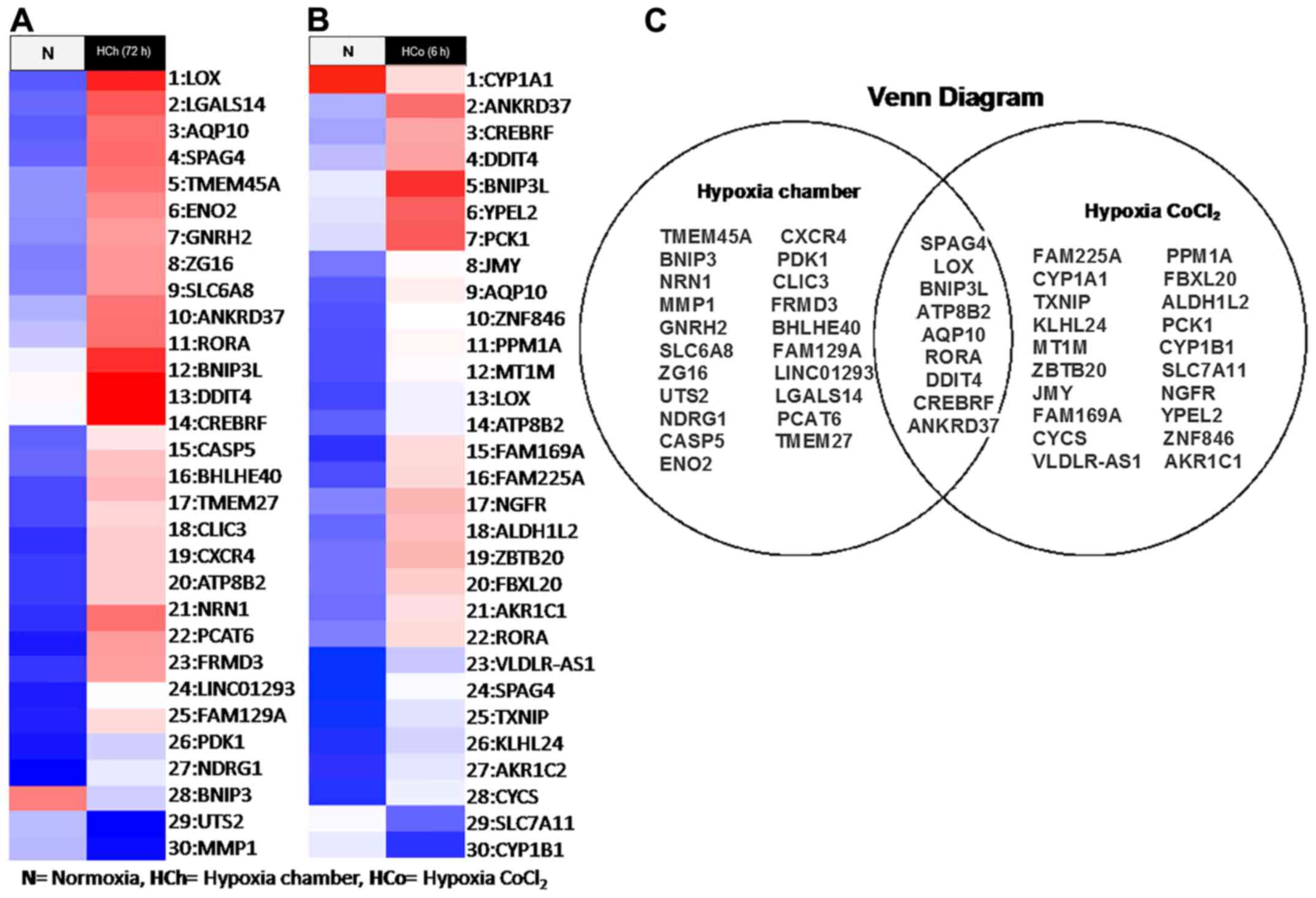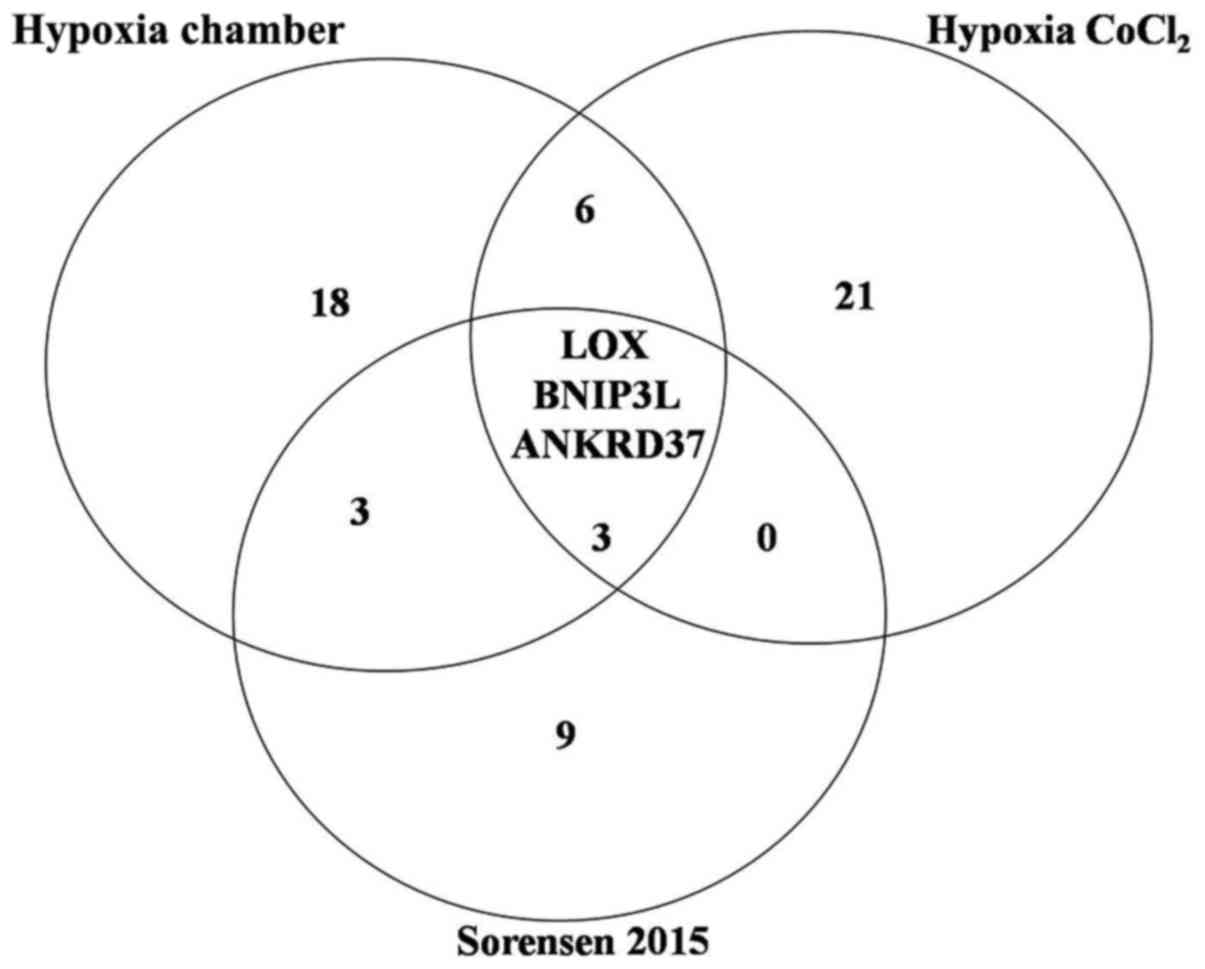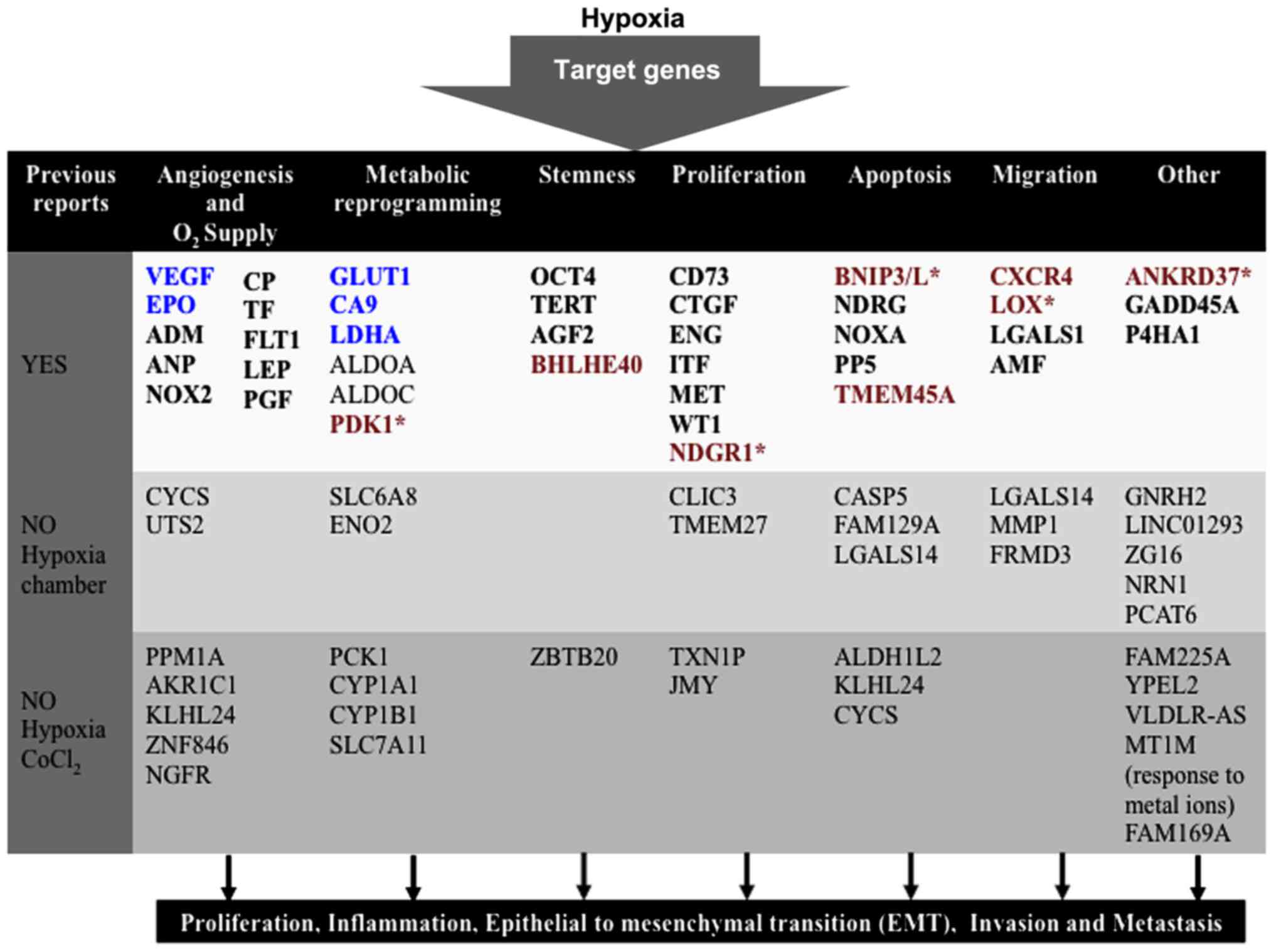|
1
|
Gatenby RA, Smallbone K, Maini PK, Rose F,
Averill J, Nagle RB, Worrall L and Gillies RJ: Cellular adaptations
to hypoxia and acidosis during somatic evolution of breast cancer.
Br J Cancer. 97:646–653. 2007. View Article : Google Scholar : PubMed/NCBI
|
|
2
|
Hanahan D and Weinberg RA: Hallmarks of
cancer: the next generation. Cell. 144:646–674. 2011. View Article : Google Scholar : PubMed/NCBI
|
|
3
|
Joyce JA and Pollard JW:
Microenvironmental regulation of metastasis. Nat Rev Cancer.
9:239–252. 2009. View
Article : Google Scholar : PubMed/NCBI
|
|
4
|
Martínez-Zaguilán R, Seftor EA, Seftor RE,
Chu YW, Gillies RJ and Hendrix MJ: Acidic pH enhances the invasive
behavior of human melanoma cells. Clin Exp Metastasis. 14:176–186.
1996. View Article : Google Scholar : PubMed/NCBI
|
|
5
|
Griffiths JR: Are cancer cells acidic? Br
J Cancer. 64:425–427. 1991. View Article : Google Scholar : PubMed/NCBI
|
|
6
|
Chiche J, Brahimi-Horn MC and Pouysségur
J: Tumour hypoxia induces a metabolic shift causing acidosis: A
common feature in cancer. J Cell Mol Med. 14:771–794. 2010.
View Article : Google Scholar : PubMed/NCBI
|
|
7
|
Abaci HE, Truitt R, Luong E, Drazer G and
Gerecht S: Adaptation to oxygen deprivation in cultures of human
pluripotent stem cells, endothelial progenitor cells and umbilical
vein endothelial cells. Am J Physiol Cell Physiol. 298:C1527–C1537.
2010. View Article : Google Scholar : PubMed/NCBI
|
|
8
|
Solaini G, Baracca A, Lenaz G and Sgarbi
G: Hypoxia and mitochondrial oxidative metabolism. Biochim Biophys
Acta. 1797:1171–1177. 2010. View Article : Google Scholar : PubMed/NCBI
|
|
9
|
Dayan F, Mazure NM, Brahimi-Horn MC and
Pouysségur J: A dialogue between the hypoxia-inducible factor and
the tumor microenvironment. Cancer Microenviron. 1:53–68. 2008.
View Article : Google Scholar : PubMed/NCBI
|
|
10
|
Ke Q and Costa M: Hypoxia-inducible
factor-1 (HIF-1). Mol Pharmacol. 70:1469–1480. 2006. View Article : Google Scholar : PubMed/NCBI
|
|
11
|
Weidemann A and Johnson RS: Biology of
HIF-1alpha. Cell Death Differ. 15:621–627. 2008. View Article : Google Scholar : PubMed/NCBI
|
|
12
|
Jewell UR, Kvietikova I, Scheid A, Bauer
C, Wenger RH and Gassmann M: Induction of HIF-1alpha in response to
hypoxia is instantaneous. FASEB J. 2001. View Article : Google Scholar : PubMed/NCBI
|
|
13
|
Messineo S1, Laria AE1, Arcidiacono B1,
Chiefari E1, Huertas Luque RM, Foti DP and Brunetti A: Cooperation
between HMGA1 and HIF-1 contributes to hypoxia-induced VEGF and
visfatin gene expression in 3T3-L1 adipocytes. Front Endocrinol
(Lausanne). 7:732016.PubMed/NCBI
|
|
14
|
Höpfl G, Ogunshola O and Gassmann M: HIFs
and tumors-causes and consequences. Am J Physiol Regu.
286:R608–R623. 2004.
|
|
15
|
Masoud GN and Li W: HIF-1ü pathway: Role,
regulation and intervention for cancer therapy. Acta Pharm Sin B.
5:378–389. 2015. View Article : Google Scholar : PubMed/NCBI
|
|
16
|
Wu D and Yotnda P: Induction and testing
of hypoxia in cell culture. J Vis Exp. 12:28992011.
|
|
17
|
Eisenberg E and Levanon EY: Human
housekeeping genes, revisited. Trends Genet. 29:569–574. 2013.
View Article : Google Scholar : PubMed/NCBI
|
|
18
|
Livak KJ and Schmittgen TD: Analysis of
relative gene expression data using real-time quantitative PCR and
the 2(-Delta Delta C(T)) method. Methods. 25:402–408. 2001.
View Article : Google Scholar : PubMed/NCBI
|
|
19
|
Sørensen BS, Knudsen A, Wittrup CF,
Nielsen S, Aggerholm-Pedersen N, Busk M, Horsman M, Høyer M,
Bouchelouche PN, Overgaard J and Alsner J: The usability of a
15-gene hypoxia classifier as a universal hypoxia profile in
various cancer cell types. Radiother Oncol. 116:346–351. 2015.
View Article : Google Scholar : PubMed/NCBI
|
|
20
|
Wenger RH, Kurtcuoglu V, Scholz CC, Marti
HH and Hoogewijs D: Frequently asked questions in hypoxia research.
Hypoxia (Auckl). 3:35–43. 2015. View Article : Google Scholar : PubMed/NCBI
|
|
21
|
Bensaad K, Favaro E, Lewis CA, Peck B,
Lord S, Collins JM, Pinnick KE, Wigfield S, Buffa FM, Li JL, et al:
Fatty acid uptake and lipid storage induced by HIF-1alpha
contribute to cell growth and survival after hypoxia-reoxygenation.
Cell Rep. 9:349–365. 2014. View Article : Google Scholar : PubMed/NCBI
|
|
22
|
Zhang YB, Wang X, Meister EA, Gong KR, Yan
SC, Lu GW, Ji XM, Shao G, et al: The effects of CoCl2 on HIF-1α
protein under experimental conditions of autoprogressive hypoxia
using mouse models. Int J Mol Sci. 15:10999–11012. 2014. View Article : Google Scholar : PubMed/NCBI
|
|
23
|
Chiche J, Ilc K, Laferrière J, Trottier E,
Dayan F, Mazure NM, Brahimi-Horn MC and Pouysségur J:
Hypoxia-inducible carbonic anhydrase IX and XII promote tumor cell
growth by counteracting acidosis through the regulation of the
intracellular pH. Cancer Res. 69:358–368. 2009. View Article : Google Scholar : PubMed/NCBI
|
|
24
|
Zuo J, Wen J, Lei M, Wen M, Li S, Lv X,
Luo Z and Wen G: Hypoxia promotes the invasion and metastasis of
laryngeal cancer cells via EMT. Med Oncol. 33:152016. View Article : Google Scholar : PubMed/NCBI
|
|
25
|
Guimarães TA, Farias LC, Santos ES, de
Carvalho Fraga CA, Orsini LA, de Freitas Teles L, Feltenberger JD,
de Jesus SF, de Souza MG, Santos SH, et al: Metformin increases PDH
and suppresses HIF-1α under hypoxic conditions and induces cell
death in oral squamous cell carcinoma. Oncotarget. 7:55057–55068.
2016. View Article : Google Scholar : PubMed/NCBI
|
|
26
|
Zeng HL, Zhong Q, Qin YL, Bu QQ, Han XA,
Jia HT and Liu HW: Hypoxia-mimetic agents inhibit proliferation and
alter the morphology of human umbilical cord-derived mesenchymal
stem cells. BMC Cell Biol. 12:322011. View Article : Google Scholar : PubMed/NCBI
|
|
27
|
Li J, Zhang D, Ward KM, Prendergast GC and
Ayene IS: Hydroxyethyl disulfide as an efficient metabolic assay
for cell viability in vitro. Toxicol In Vitro. 26:603–612. 2012.
View Article : Google Scholar : PubMed/NCBI
|
|
28
|
Depoix C, Barret LA, Hubinont C and
Debieve F: Viability of primary term cytotrophoblast cell culture
in normoxia and hypoxia. Mol Hum Reprod. 19:29–34. 2013. View Article : Google Scholar : PubMed/NCBI
|
|
29
|
Jose C, Bellance N and Rossignol R:
Choosing between glycolysis and oxidative phosphorylation: A
tumor's dilemma? Biochim Biophys Acta. 1807:552–561. 2011.
View Article : Google Scholar : PubMed/NCBI
|
|
30
|
Rodríguez-Enríquez S, Carreño-Fuentes L,
Gallardo-Pérez JC, Saavedra E, Quezada H, Vega A, Marín-Hernández
A, Olín-Sandoval V, Torres-Márquez ME and Moreno-Sánchez R:
Oxidative phosphorylation is impaired by prolonged hypoxia in
breast and possibly in cervix carcinoma. Int J Biochem Cell Biol.
42:1744–1751. 2010. View Article : Google Scholar : PubMed/NCBI
|



